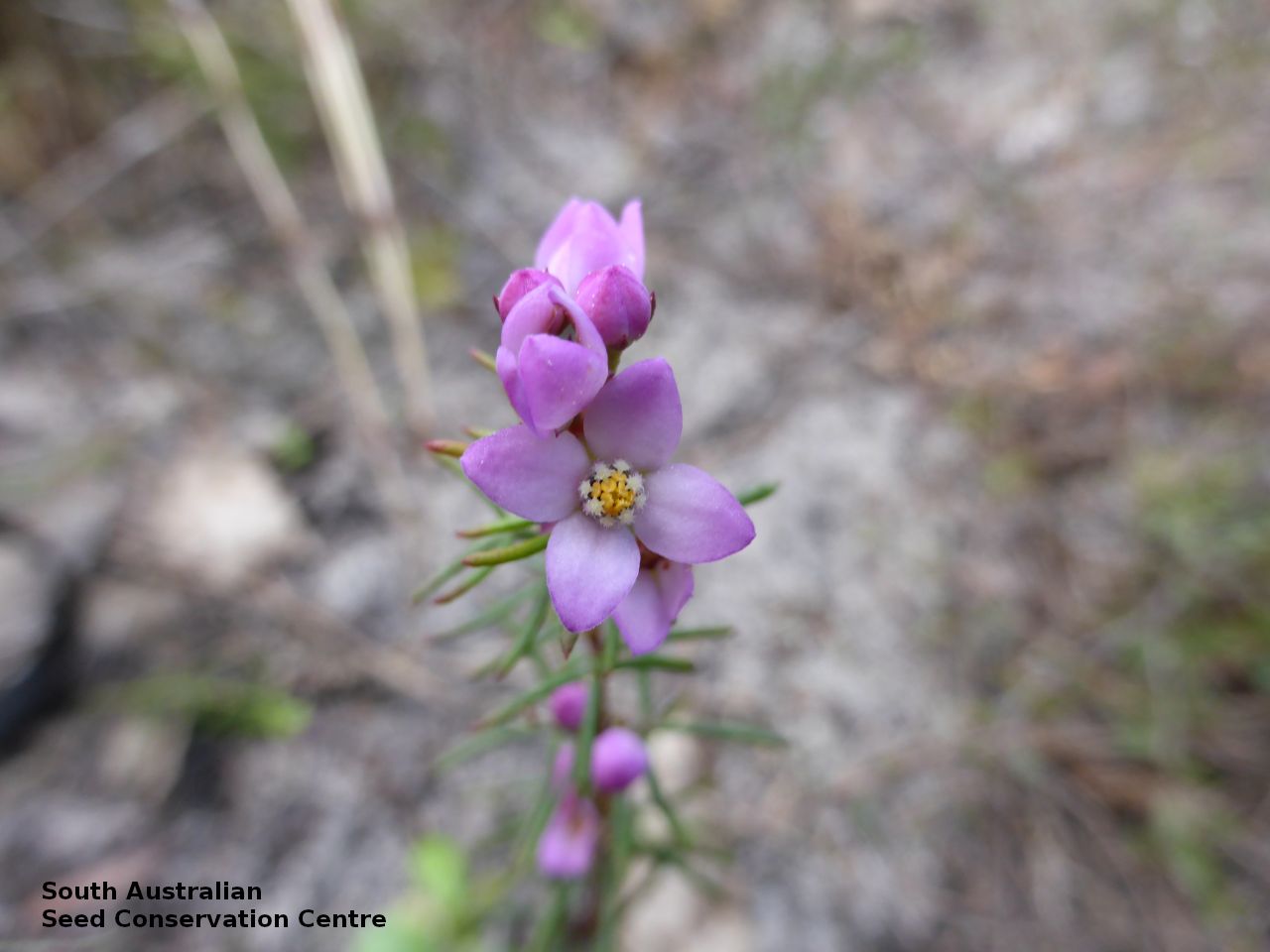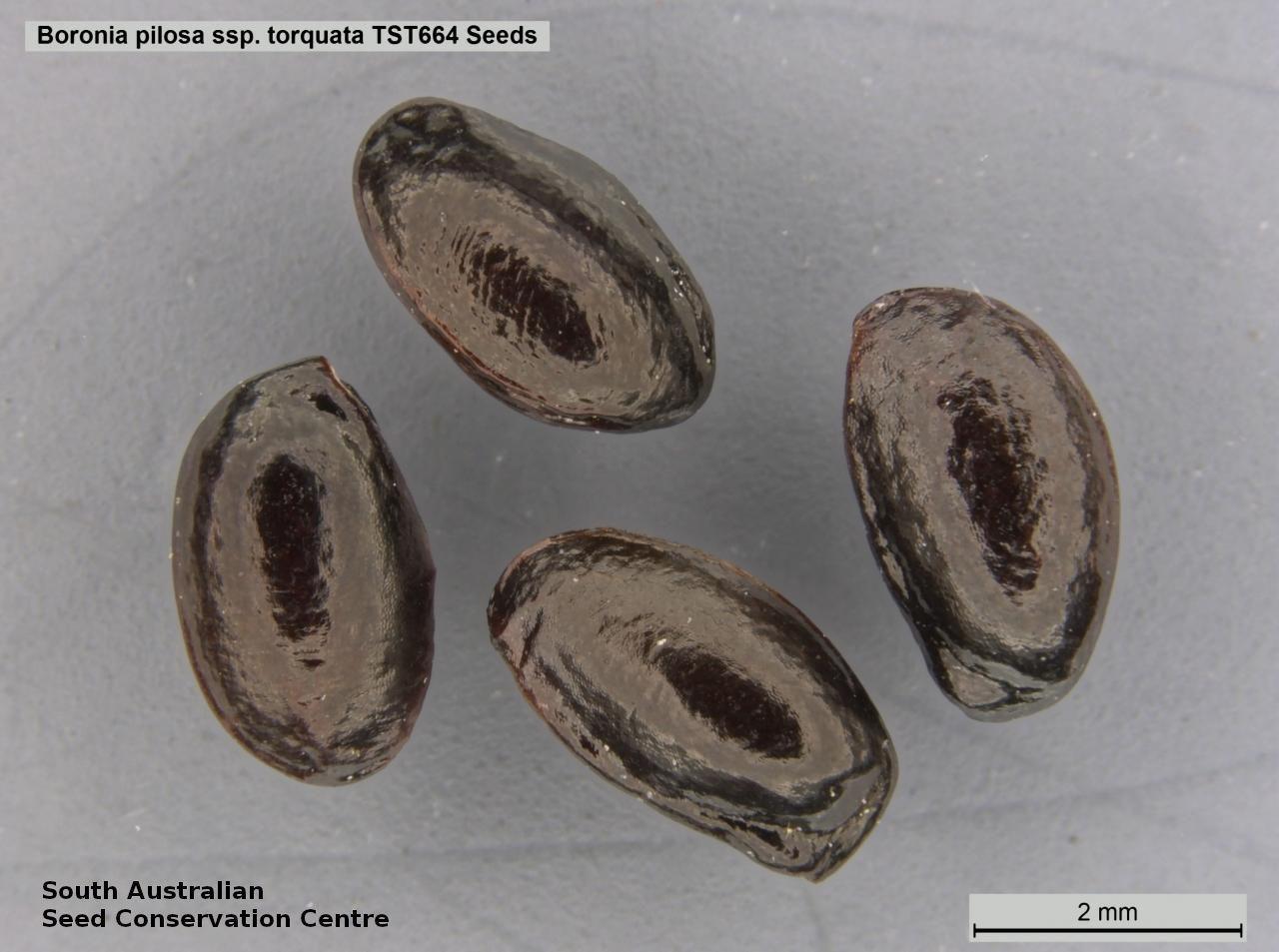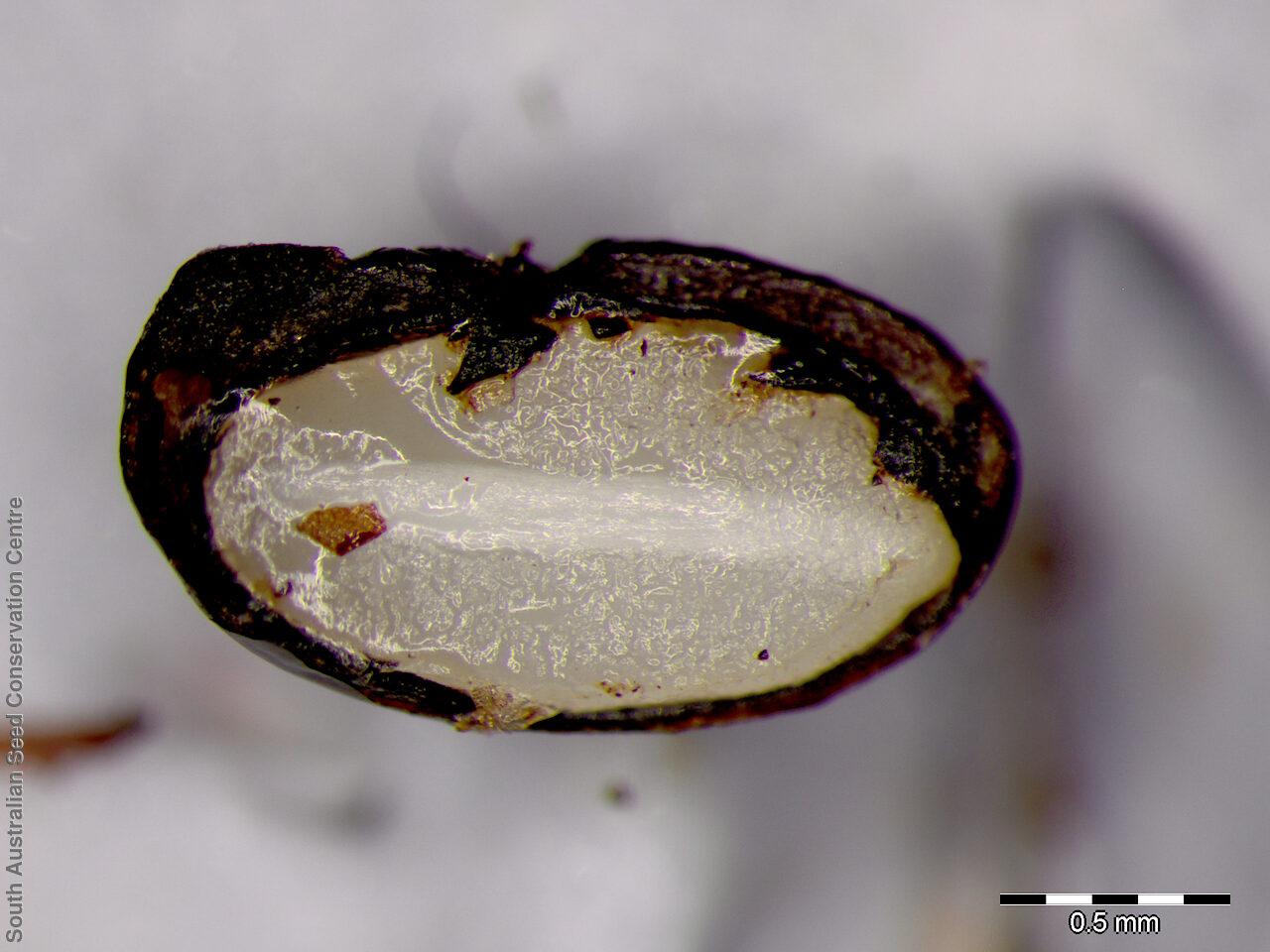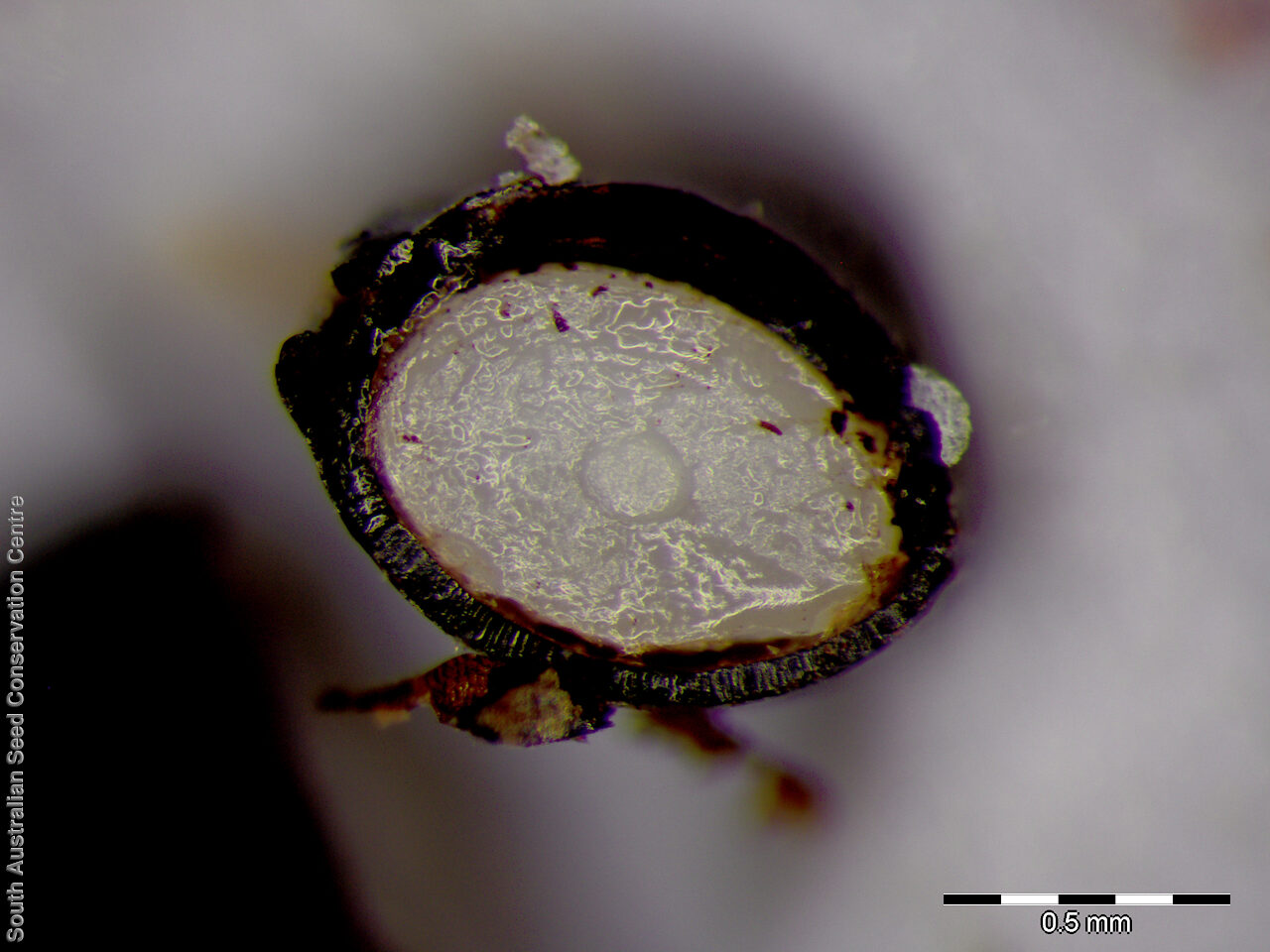






Botanical art
Etymology
Boronia named after Francesco Borone (1769-1794), an Italian botanical enthusiast who accompanied many botanical expeditions and impressed Smith (person who described the genus) with his enthusiasm and ability. Pilosa from the Greek 'pilosus' meaning covered in long, soft hairs. Torquata from the Latin 'torquatus' meaning collared, alluding to the bands of hairs between the nodes.
Distribution and status
Found only in the lower South-east in South Australia, with an old record from the tip of Eyre Peninsula. Also found in Victoria. Native. Rare in South Australia. Rare in Victoria.
Herbarium regions: Eyre Peninsula, South Eastern
NRM regions: Eyre Peninsula, South East
AVH map: SA distribution map (external link)
Plant description
Erect shrub to 50 cm high with 2 bands of setose to pilose hairs between the nodes of the branchlets. Leaves narrowly obovate to 10 mm long and 1.5 mm wide, obtuse, setose. Inflorescence terminal and axillary in 3-6-flowered cymes with pink flowers. Flowering between September and December. Fruits are pale brown, two to four segmented capsule. Seeds are black ovoid seed to 3 mm long and 2 mm wide with a wrinkled surface. Seed embryo type is linear fully developed.
Seed collection and propagation
Collect seeds between November and February. Collect mature capsules, those that are turning a pale straw colour and contain hard seeds. Place the capsules in a tray and leave to dry for a weeks. Then rub the capsules gently by hand to dislodge the seeds. Use a sieve to separate the unwanted material. Store the seeds with a desiccant such as dried silica beads or dry rice, in an air tight container in a cool and dry place. Seed viability can be low. This species has morphophysiological dormancy and can be difficult to germinate.
| Location | No. of seeds (weight grams) | Number of plants | Date collected | Collection number Collection location | Date stored | % Viability | Storage temperature |
|---|---|---|---|---|---|---|---|
| BGA MSB | 2,900 (2.73 g) 2,000 (2 g) | 30 | 18-Nov-2008 | TST664 South Eastern | 20-Jul-2009 | 90% | +5°C, -18°C |
Number of plants: This is the number of plants from which the seeds were collected.
Collection location: The Herbarium of South Australia's region name.
% Viability: Percentage of filled healthy seeds determined by a cut test or x-ray.